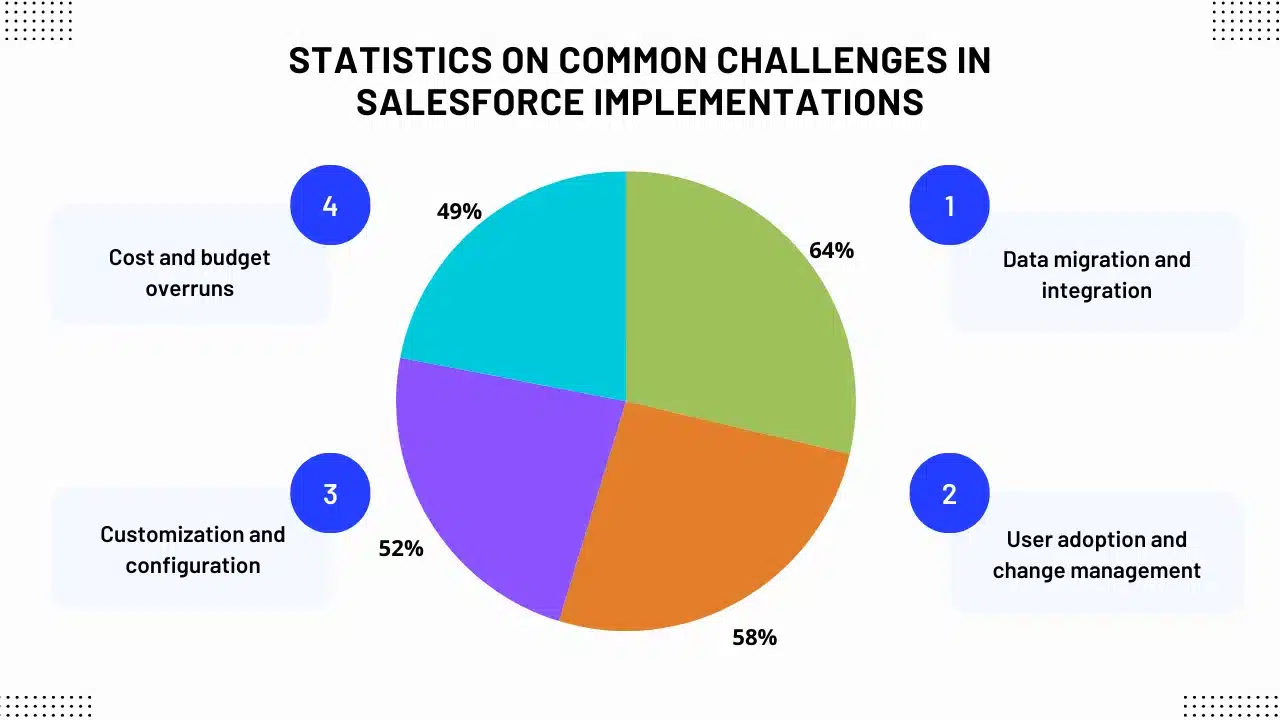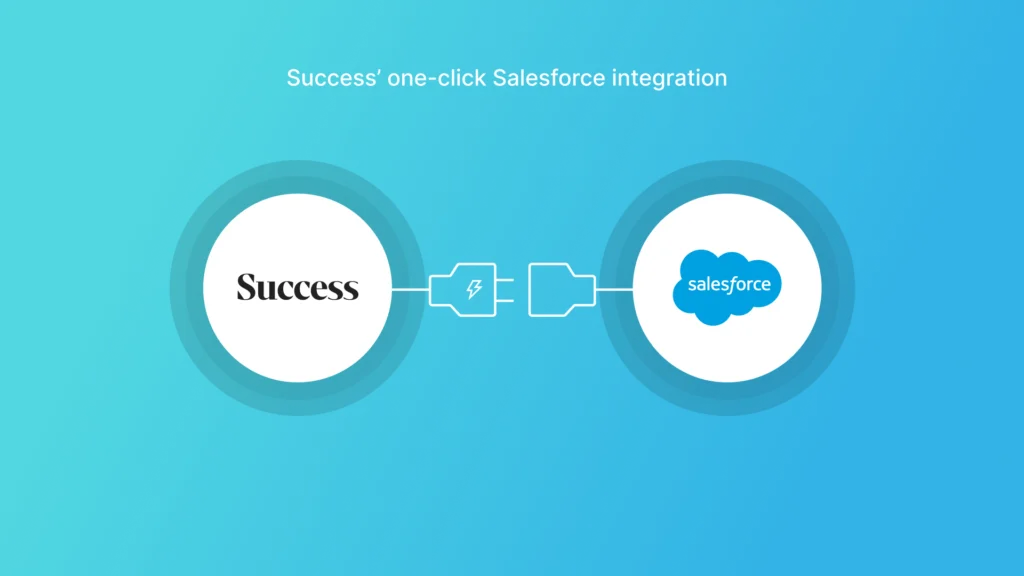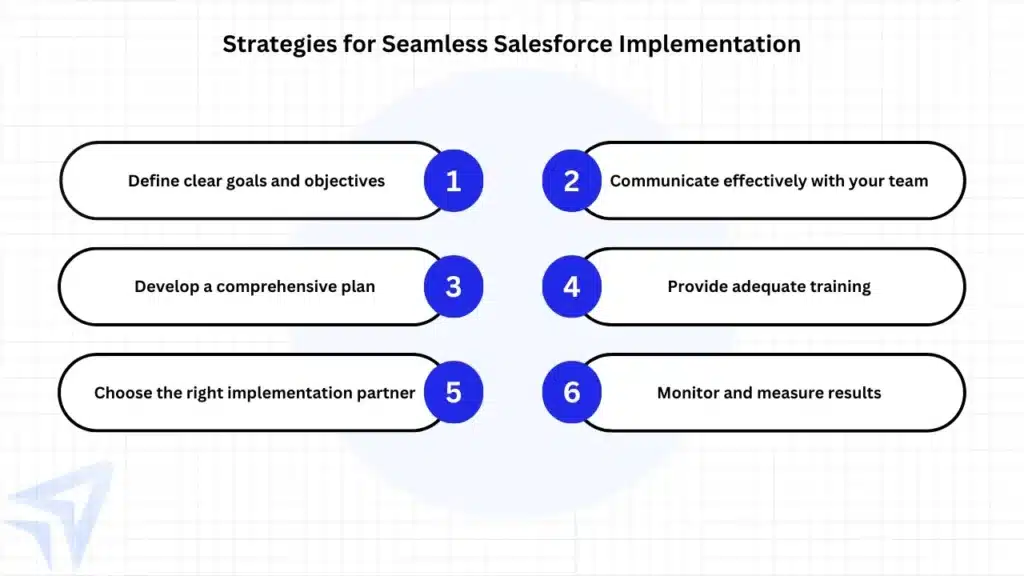Salesforce is a dynamic force in the world of CRM platforms, offering organizations of all sizes the transformative potential for improved sales, marketing and customer service operations. However, the road to Salesforce implementation is not without its challenges.
In this blog, we take a closer look at the hurdles companies often face when implementing Salesforce. Our goal is to comprehensively explore these challenges and present strategic approaches that will pave the way for a successful and efficient Salesforce deployment in your organization.
Statistics on common challenges in Salesforce implementations

- Data migration and integration: 64% of organizations struggle with migrating data from legacy systems and integrating Salesforce with other business systems.
- User adoption and change management: 58% of organizations find it challenging to drive user adoption and implement changes in work processes.
- Customization and configuration: 52% of organizations face difficulties customizing Salesforce to meet their specific needs and configuring it for optimal performance.
- Cost and budget overruns: 49% of organizations encounter challenges in staying within their budget for Salesforce implementations.
Strategies for Seamless Salesforce Implementation

Seamless success with Salesforce starts with a smart strategy. By implementing the following key steps, organizations can effortlessly tackle challenges and lay the groundwork for a successful deployment:
- Define clear goals and objectives: Before you start implementing Salesforce, it is important to define your goals and objectives for the project. This will help you to focus your efforts and ensure that the implementation is aligned with your business strategy.
- Develop a comprehensive plan: Your Salesforce implementation plan should include a detailed timeline, budget, and resource allocation. It should also outline the steps you will take to migrate your data, configure the system, and train your users.
- Choose the right implementation partner: An experienced Salesforce implementation partner can provide you with the expertise and guidance you need to successfully implement the system. They can also help you to avoid common pitfalls and ensure that your implementation is on time and on budget.
- Communicate effectively with your team: It is important to communicate effectively with your team throughout the Salesforce implementation process. This will help to ensure that everyone is on the same page and that there are no surprises.
- Provide adequate training: Your users need to be adequately trained on Salesforce in order to be able to use the system effectively. This training should cover the basics of the system as well as your specific customizations and configurations.
- Monitor and measure results: Once your Salesforce implementation is complete, it is important to monitor and measure the results to ensure that you are achieving your goals. This will help you to identify areas for improvement and make necessary adjustments.
Also Check: Salesforce Manufacturing Cloud
Conclusion
While Salesforce holds immense potential as a powerful business tool, acknowledging and proactively addressing common implementation challenges is key. Businesses of all sizes can benefit greatly by understanding and preparing for these challenges. The strategies outlined in this blog serve as a robust plan, increasing the likelihood of a smooth Salesforce implementation and ensuring organizations achieve their desired results.














